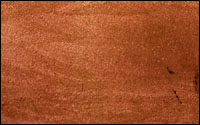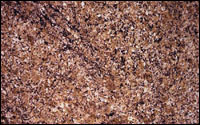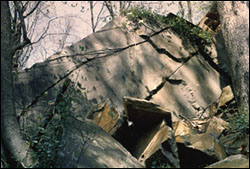
Sandstone |

Marble |

Limestone |

Granite |
In colonial days, the first solid ground on the marshy north shore of the Potomac, now just north of the Lincoln Memorial, was an outcrop of Piedmont rocks that jutted into the river. This promontory served as the starting point for surveys establishing property lines for the early settlers. It was called Braddock's Rock, because the British General Edward Braddock and his red-coated soldiers, accompanied by Lt. Col. George Washington, are thought to have landed there in 1755 on their way to Fort Duquesne (now Pittsburgh). In time Braddock's Rock became a quarry, and it may have furnished stone for the foundations of both the White House and the Capitol.

Sandstone |

Marble |

Limestone |

Granite |

Little Falls Quarry on the Potomac River, Montgomery County, Maryland |
Many other quarries supplied rocks from the Piedmont province to the young city. One of the most important was the Little Falls Quarry on the Maryland shore of the Potomac, just beyond the District of Columbia. Much of the stone for the foundations and the backing for the marble of the Washington Monument came from this quarry in the Sykesville Formation. An engraved stone from the Little Falls Quarry appears among the various commemorative stones from all over the world that line the interior walls of the monument. |
This page is https://pubs.usgs.gov/stones/stones1.html
Maintained by Publications Services
Last revised 1-7-99 (krw)